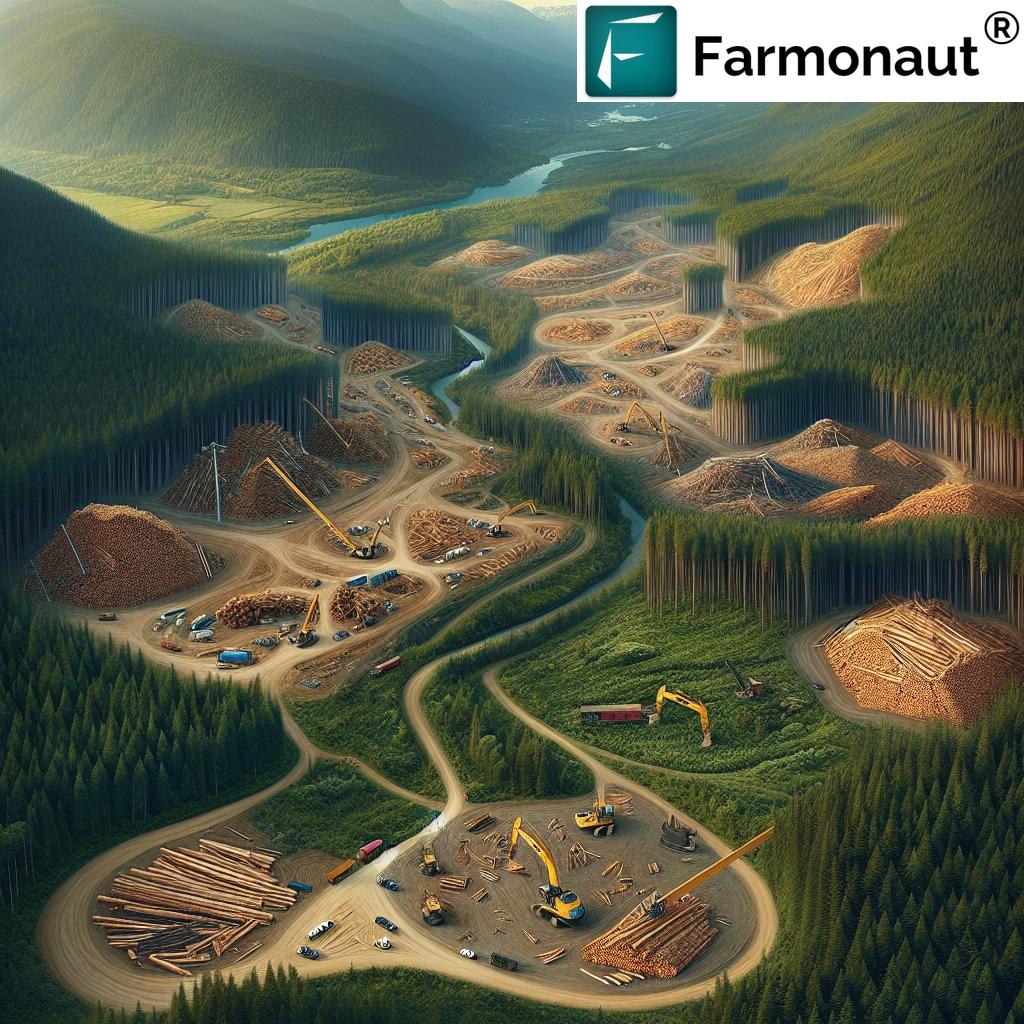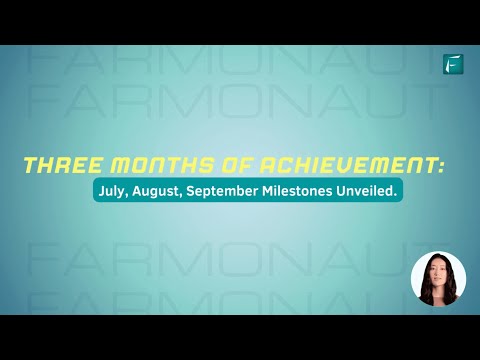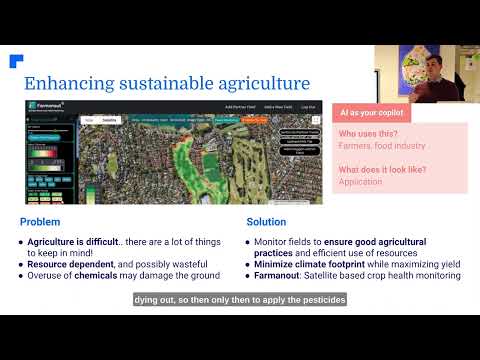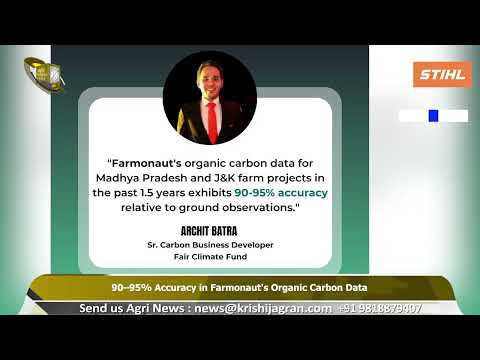Wildfire Risk Reduction: 9 Projects Transforming Forests in BC
“9 innovative projects in BC are actively reducing wildfire risk and transforming over 10,000 hectares of forest sustainably.”
Photo: FESBC Nelson
Six Kootenay-Boundary communities and workers throughout British Columbia are benefiting from the latest forestry funding through the Forest Enhancement Society of B.C. (FESBC). It’s a multi-pronged approach—spanning wildfire risk reduction, fibre recovery projects, and sustainable forestry practices—that aims to keep our rural communities safe, fortify forest health, and strengthen local economies. As rural wildfire mitigation becomes an urgent priority due to increasingly intense fire seasons, these 9 projects ($1.9 million funding) are setting new standards for flammable waste removal and wood fibre utilization in our forests.
Why Wildfire Risk Reduction Is Essential for BC Forests
Wildfires have long shaped the natural landscape of British Columbia (BC), but in recent years, we’ve all felt their growing impact—on our forests, rural communities, and on local economies. With more long and intense wildfire seasons threatening everything from homes to livelihoods, wildfire risk reduction has become a top priority for residents, forestry companies, and governments alike. The situation calls for innovation, strategic planning, and widespread collaboration.
The Unique Challenges Facing BC Forests
- Large Areas, Remote Centres: British Columbia’s forests span enormous and often remote regions, creating accessibility challenges for both prevention and intervention efforts.
- Climate Change: Warmer temperatures and shifting precipitation patterns mean our forests are drier and more flammable than ever.
- Wildland-Urban Interface: More rural and suburban homes and businesses are close to forest edges, increasing risk to people and property.
- Resource & Employment: Healthy forestry supports jobs and economies, making wildfires a social and economic as well as environmental threat.
- Undergrowth Build-Up: Decades of fire prevention have led to an accumulation of small trees, brush, and waste slash piles, increasing the risk of high-intensity wildfires.
How Forest Fibre Recovery Projects Support Communities
Fibre recovery projects are central to wildfire risk reduction. By removing flammable waste—from slash piles to abandoned wood—and directing it to mills or energy producers, we not only reduce forest fire fuel but support rural jobs and industry. This synergy between sustainable forestry practices and community safety means that waste isn’t simply burned or left to become a hazard; it is valorized, creating a true rural community wildfire prevention model.
When fibre recovery projects succeed, their impact is twofold:
- Wildfire Risk Reduction: Removing up to 11,000 truckloads of flammable wood fibres from forests directly lowers the risk and intensity of wildfires.
- Fibre Utilization:
- Mills and forestry companies gain access to fibre that would otherwise go to waste, supporting rural employment and sustainable product development.
“Many rural British Columbians know the risk of wildfires well, and many have been in frightening situations,” shared Steve Morissette, parliamentary secretary for rural development and Kootenay-Monashee MLA. This new FESBC funding helps strengthen sustainability in both fire prevention and rural economic resilience for all British Columbians.
“Fibre recovery initiatives in BC have diverted over 50,000 tonnes of wood from waste, supporting rural community resilience.”
Project Impact Overview Table
Discover how each project is making a measurable difference in wildfire risk reduction, forest health enhancement, and rural resilience.
Access & monitor your forestry or agricultural lands in real time via the Farmonaut Web and Mobile Apps. Leverage advanced satellite-based insights for resource management, wildfire risk reduction, and sustainability projects across British Columbia’s vast remote regions.
For developers or enterprise solutions, Farmonaut’s API and API developer docs provide robust access to satellite data streams. Integrate powerful crop and forest monitoring into your own systems to facilitate smarter, data-driven decision-making for fire prevention and beyond.
Spotlight: 9 Projects Transforming Kootenay-Boundary Forests
In our Kootenay-Boundary region, nine FESBC-funded projects are currently transforming the face of forest health enhancement and wildfire risk reduction. Through techniques such as selective thinning, prescribed burning, and, most impactfully, fibre recovery, these projects are protecting Kaslo, Creston, Nakusp, Harrop-Procter, Slocan, and the City of Kimberley—an impressive footprint covering more than 10,000 hectares.
- Kaslo Community Forest: A hub for rural wildfire mitigation, combining community-driven thinning with planned fibre recovery.
- Creston Valley Forest Corporation: A focus on prescribed burns and waste fibre removal to cool the landscape and supply mills.
- Nakusp and Area Community Forest: Expanding community fire buffers and slash pile reduction to lower risk and supply jobs.
- Harrop-Procter Community Co-operative: Pioneering sustainable forestry practices including multi-stage thinning and undergrowth removal with rural engagement.
- Slocan Integral Forestry Co-operative: Boosting local mill supply while protecting rural homes and infrastructure from encroaching wildfires.
- City of Kimberley: Innovative fuel breaks and fibre chipping programs in urban–rural interfaces to keep families and business safe.
Additional projects in Boundary and indigenous communities address cultural practices, emergency preparedness, and waste-to-fuel pilots—amplifying the reach and adaptability of forest enhancement across BC.
Expand your understanding of forest management at scale and advisory programs:
• Large Scale Farm & Forest Management Tools for professionals managing plantations, woodlots, or forest tracts. This centralized platform supports efficient, real-time monitoring of hectares of land, enabling proactive, sustainable decisions for both fire prevention and fibre recovery.
• Crop, Plantation, and Forest Advisory Services deliver tailored recommendations, leveraging AI analysis and satellite data for health assessment and resource optimization.
Key Strategies for Wildfire Risk Reduction
Let’s break down the main approaches that are driving real progress in BC wildfire prevention:
-
Thinning & Undergrowth Removal:
- Reducing forest density interrupts the pathway for severe wildfires, slows their spread, and lowers peak temperatures.
- Removing fine fuels and undergrowth cuts highly flammable material, guarding forest centres and rural edges.
-
Fibre Recovery & Wood Utilization:
- Planned fibre recovery projects get waste wood into productive use, diverting it from open burning and integrating rural supply chains.
- Small- and medium-sized mills in Kaslo, Slocan, and Creston access new fibre sources, creating jobs and reducing pile burning.
-
Prescribed Burning:
- Safe, controlled burns remove hazardous build-up, maintain ecological balance, and mimic historic fire cycles so forests can regenerate healthily.
-
Slash Pile Reduction:
- Instead of waste pile burning, removed fibre is transported to mills or bioenergy facilities, supporting the principles of wood fibre utilization and circular forestry.
-
Urban-Rural Interface Planning:
- Fuel breaks and chipping projects in critical areas like the City of Kimberley shield homes and property from encroaching fires.
-
Cultural & Community Engagement:
- Integrating First Nations’ traditional ecological practice—such as cultural burning—restores historic forest balance.
-
Hazard Mapping & Planning:
- Science-driven risk modeling identifies priority hectares, targets interventions, and strengthens emergency planning.
Transparency and Eco-Compliance: For companies and institutional stakeholders, Product Traceability Solutions help ensure supply chain transparency for responsibly harvested fibre and forest products, while staying competitive in international trade. Further, Carbon Footprinting Tools enable forest managers to monitor eco-impact and demonstrate reductions in greenhouse gas emissions from smarter wildfire prevention and fibre use.
The Role of Innovation and Sustainability in BC Forestry
Our response to wildfire risk is not just reactive—it’s visionary. By blending innovation with time-tested sustainable forestry practices, we create more resilient British Columbian forests and communities. Let’s explore how innovation and policy shape this transformation:
- Streamlining Permitting: Faster, data-driven approvals for wildfire risk reduction interventions speed up deployment and maximize project seasons.
- Investing in Technology: From satellite forest health monitoring to advanced fibre recovery logistics, our ability to track, plan, and act is accelerating.
- Fair International Trade: Ongoing advocacy for fair softwood lumber trade, and combatting tariffs and duties keeps BC’s markets strong and viable.
- Data Transparency: Open reporting and third-party verification of wildfire mitigation outcomes build trust among communities, investors, and policy-makers.
How Technology Empowers Forest Resilience
Emerging technologies are reshaping the way we approach wildfire risk reduction, sustainable forestry, and fibre recovery. Farmonaut—a pioneering agricultural technology leader—provides advanced, satellite-based farm and forest management solutions via Android, iOS, Web Apps, and a robust API. Our mission is to make precision agriculture and forest management both affordable and accessible globally, but especially impactful for British Columbian managers seeking to optimize large-scale projects.
- Real-Time Crop & Forest Health Monitoring: Multispectral imagery lets us see forest health, moisture stress, and fire vulnerability across hundreds of hectares—enabling evidence-based intervention and resource management. Fleet & Resource Management Tools help coordinate machinery, manpower, and logistics for fibre recovery and wildfire mitigation.
- AI-Based Advisory: Personalized, AI-driven recommendations for thinning, prescribed burning, and fibre utilization based on real-world satellite data.
- Blockchain Traceability: End-to-end transparency for project outputs—tracking certified, responsibly sourced fibre from forest to mill to market.
- Carbon Footprinting: Integrated carbon accounting to measure environmental benefits of removing flammable excess and reducing slash pile burning.
- Decision Support for Permitting: Data-driven impact projections to streamline planning and reporting to regulatory authorities.
These solutions are built with sustainability, accountability, and scalability in mind, tailored for everything from community forests in Kaslo to large administrative districts in the Kootenay-Boundary region. Whether you’re a rural forestry operator, a mill, or a government agency, Farmonaut’s tools are purpose-built to support every phase of wildfire risk reduction, fibre recovery, and sustainable management.
Interested in elevating your entire monitoring and management workflow? Our carbon_footprinting and crop_loan_and_insurance modules empower stakeholders—from resource managers to financial institutions—to integrate sustainability goals, unlock operational efficiency, and support compliance and financing for critical projects.
Read more about how carbon and sustainability tracking and risk-reducing insurance solutions can serve the evolving needs of Western Canadian forestry.
Farmonaut Subscription Pricing
Get started with Farmonaut’s affordable subscription tiers for farm and forest monitoring. Flexible plans ensure small rural managers and large forestry companies alike can benefit, no matter their hectare coverage or update frequency.
FAQ: Wildfire Mitigation & Forest Sustainability
Q1: What is wildfire risk reduction and why is it crucial for British Columbia?
Wildfire risk reduction involves actively managing forest fuel loads and implementing techniques—such as thinning, prescribed burning, and fibre recovery projects—to minimize the risk, severity, and impact of forest fires. With increasing climate variability and forest density, these steps are vital for protecting rural communities, critical infrastructure, and the sustainability of BC’s forestry sector.
Q2: How do fibre recovery projects work and what benefits do they provide?
Fibre recovery projects strategically remove wood fibres that would otherwise be left to accumulate as wildfire fuel or burned in slash piles. The recovered fibre is then directed to local mills or bioenergy producers, supporting job creation and sustainable wood utilization while lowering overall wildfire risk.
Q3: What role do sustainable forestry practices play in wildfire risk reduction?
Sustainable forestry practices ensure forests are managed for long-term health and productivity. Techniques like selective thinning and prescribed burning maintain ecosystem balance, enhance biodiversity, and prevent dangerous build-up of flammable material.
Q4: How can communities get involved in wildfire prevention?
Communities play an active role through local fire prevention committees, volunteering for thinning projects, supporting community forests, and participating in emergency preparedness plans coordinated by the BC Wildfire Service.
Q5: How does Farmonaut support forest health and wildfire mitigation?
Farmonaut provides precise, satellite-driven monitoring tools and AI-powered advisory services that help forest managers, rural communities, and commercial operators track forest health, coordinate interventions, and maximize fibre recovery—integral for efficient, effective wildfire risk reduction and sustainable resource planning.
Conclusion & Call to Action: Building Safer, Sustainable Forests Together
Through wildfire risk reduction, fibre recovery projects, and widespread adoption of sustainable forestry practices, British Columbia’s rural and remote communities are charting a path toward environmental stability, economic opportunity, and forest health enhancement. With targeted funding, innovative planning, and new data-driven technologies from tools like Farmonaut, we have the means to reduce wildfire risk, support rural jobs, and ensure our forests remain a vibrant resource for generations to come.
Let’s support the ongoing transformation in Kaslo, Creston, Nakusp, Slocan, Harrop-Procter, and the City of Kimberley—standing together to create safe, resilient, and sustainable communities from valley to mountain ridge. Discover, manage, and monitor your own lands with Farmonaut’s satellite-based solutions and be part of a future where every hectare makes a difference.
Act now: Download the Farmonaut App or connect with our admin portal to bring real-time forest monitoring and wildfire prevention to your project today.








